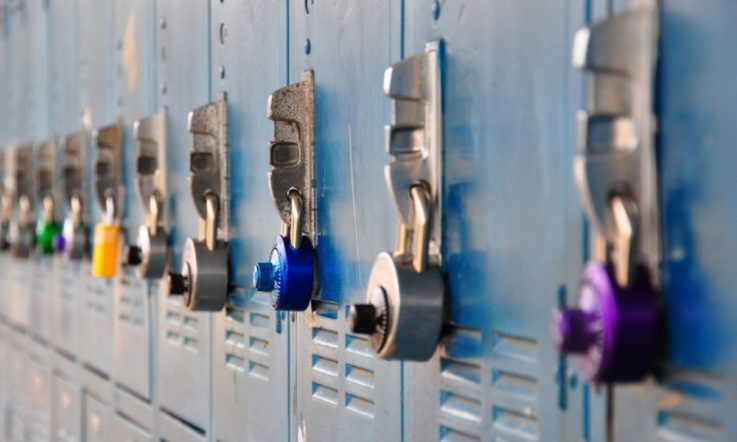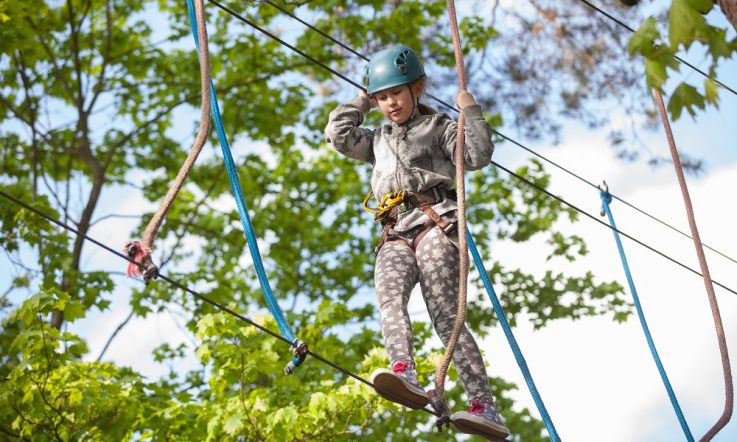Many schools will already be planning their transition programs for students beginning secondary school in 2020, and research shows 30 per cent of these students will have difficulty adjusting to their new environment.
Ensuring students transition smoothly from primary to secondary school is the goal of most transition programs employed by schools. It is critical however, that these programs meet the needs of all students.
A new paper, Guidelines for designing middle-school transition using universal design for learning principles, published in Improving Schools, proposes that schools look to the principles of Universal Design for Learning (UDL) when planning their transition programs.
UDL is borne of an architectural concept of universal access for all. It provides a framework for the creation of a curriculum that addresses cognitive barriers to access, rather than physical barriers. For well over a decade, it has been recognised as an approach that provides for the inclusion of children with disabilities.
Lead author of the report, Associate Professor Dianne Chambers from The University of Notre Dame, says that the framework could be applied to transition programs.
‘Transition is such an important time because it can set the theme for the rest of your schooling,' she tells Teacher.
Chambers and co-author Dr Anne Coffey cite research that shows that all learners' needs can be addressed through the application of UDL principles in classroom planning.
These include, but are not limited to, those: who have learning difficulties and disabilities; with intellectual and developmental disabilities; with English as a second language; who are deaf or hard of hearing; and students who struggle with specific areas, such as Mathematics.
The researchers found that three principles of UDL may provide a useful basis for developing transition programs that address all participants' needs:
- Multiple means of engagement;
- Multiple means of representation; and,
- Multiple means of action and expression.
Practical applications of the framework
In their paper, the authors provide many examples of how to practically apply UDL to principles to a transition program. Here are some examples:
Podcasts: Rather than rely solely on traditional forms of communication such as newsletters to disseminate information, schools should utilise other forms, such as podcasts that can be accessed from the school website at the parents' and students' leisure.
School tours: To partly address children's fear of getting lost during transition, rather than only handing out maps or just walking around, school tours should be arranged with ‘activities' so that students can record (in a way that suits them) key features of their new campus.
Traffic light system: Provide three, different coloured cue cards for each student to express anxiety or stress during the various activities. The cards can be used in a similar way to a traffic light system, with green being ‘I'm OK', orange relating to ‘A little nervous' and red indicating ‘I am not coping'. These may be a useful way for teachers to learn about new students and triggers for anxiety.
Creating a program for your own school context
The report acknowledges no one transition program created using UDL would look the same as any other because of the variations in diversity at each school.
If a school was seeking to make its transition program more inclusive, the one piece of advice Chambers would offer is to deeply think about the diversity of new students and parents.
‘Really, really consider the diversity and how you are then going to cater for that diversity in your transition program because we tend to set them all to just one thing, but we are all different; we access things in different ways,' Chambers says.
‘You just don't know who's coming through into Year 7 for next year, so you have to have a program that can cater for a wide variety. That's why UDL is so useful. You are not going back and retrofitting, you are planning a program so all people can access it.'
She says that while the challenges that students experience before, during and after transition are often similar, the ways in which students confront and overcome these challenges are many and varied.
‘I think we need to be aware that people do access information in different ways – and we do not always think about that,' Chambers says.
References
Chambers, D., & Coffey, A. (2019). Guidelines for designing middle-school transition using universal design for learning principles. Improving Schools, 22(1), 29–42. https://doi.org/10.1177/1365480218817984
Think about your school’s transition program. In what ways could you make it more inclusive for all students and their parents?
In what ways do you work to understand the challenges that each student experiences during their transition from primary to secondary school? How do you help them to overcome these challenges?



